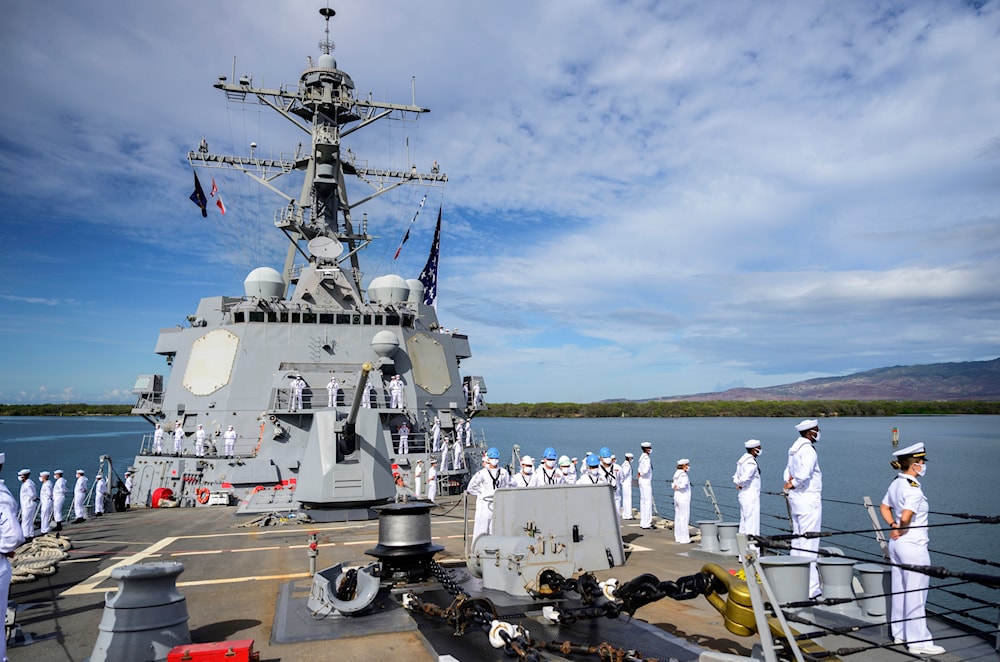Pentagon to cut weapon programs to stay under budget for 2025: Reports
The Pentagon is set to undergo a $10 billion reduction following spending caps mandated by Congress this year.
-

US Navy, sailors man the rails as the guided-missile destroyer USS Michael Murphy (DDG 112) prepares to pass the Battleship Missouri Memorial and USS Arizona Memorial on September 2, 2020. (AP)
The Pentagon is set to reduce $10 billion in weapon programs to adhere to the budget for fiscal year 2025, as stated by US and industry officials, as reported by Politico.
The suggested reductions encompass scaling back purchases of F-35 fighter jets, an attack submarine, and the development of new army helicopters and drones.
The Pentagon intends to submit its budget to Congress in early March, and it is anticipated to be under $850 billion for fiscal year 2025, according to the report.
The report states that the expected budget proposal will involve the cancellation of the OH-58 Kiowa scout helicopter replacement, the termination of a service-life upgrade program for the Sikorsky UH-60 Black Hawk helicopter, a delay in the production of improved turbine engines for the AH-64 Apache and Black Hawk helicopters, and the retirement of the fleet of AAI RQ-7 Shadow and AeroVironment RQ-11 Raven drones.
Under the 2025 budget, the Navy is anticipated to only have the capacity to construct one new Virginia-class submarine, as opposed to the usual two in recent decades. It's worth noting that the construction cost of a single Virginia-class submarine exceeds $4 billion. Additionally, the report indicates that the US Air Force is expected to decrease its purchases of F-35 fighter jets by 18 percent this year.
Read next: US lawmakers agree on $1.6 trillion federal budget
Last month, the Pentagon estimated that the military deployment in the Middle East following the launch of the Israeli war on Gaza last October will cost $1.6 billion, but the department won't be able to pick up the cheque due to Congress's inability to pass a budget, Politico reported, citing US officials.
Expenses included dispatching additional warships, fighter jets, and other hardware to the region, and maintaining their presence there. However, the expected costs did not include missiles the United States used to launch attacks on Yemen or intercept their drones or missiles over the Red Sea, the officials added.
Last year, the Defense Department dispatched an extra aircraft carrier strike group, air defenses, fighter jets, and hundreds of troops to the Middle East to prevent the situation from escalating into a regional war. However, according to Politico, the main problem in this framework was congressional dysfunction, which means that the Pentagon was unable to fund the buildup.
The federal government's temporary financing included the military as well, and this freezes expenditure at the same levels as the previous year. Because the personnel transfers in the Middle East were unplanned, the Pentagon was forced to draw funds from existing operations and maintenance accounts, according to DOD spokesperson Chris Sherwood.

 3 Min Read
3 Min Read








